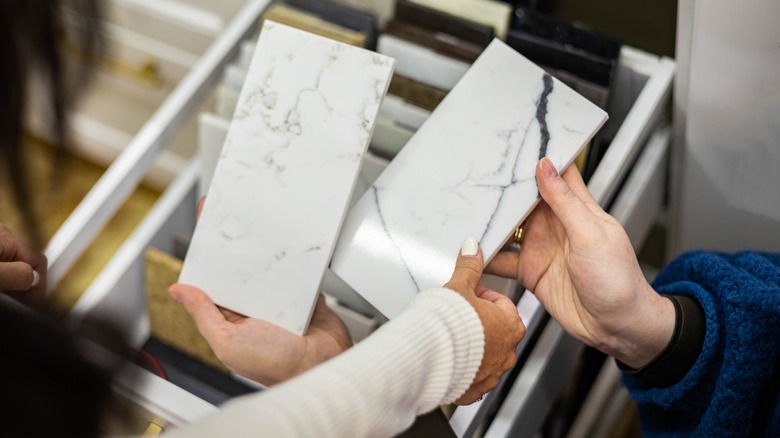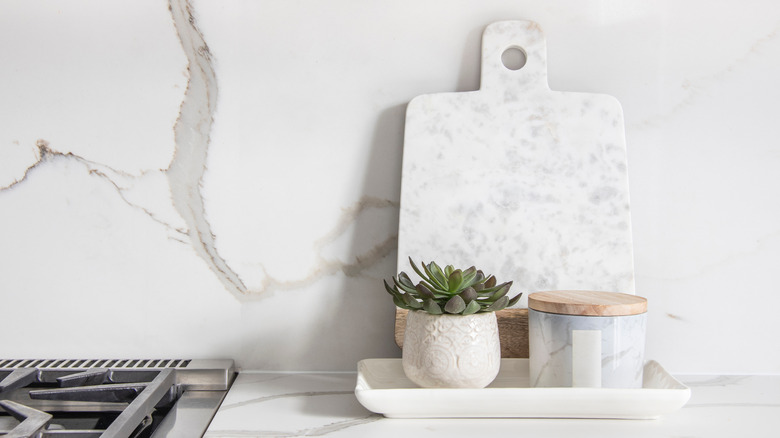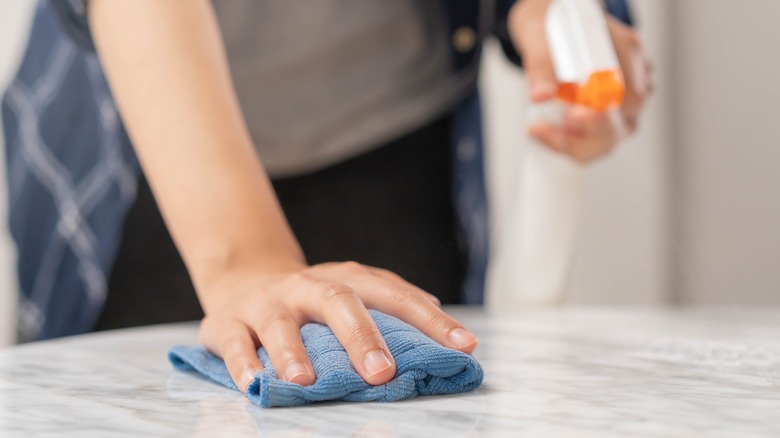Why You Should Consider A Marble Backsplash For Your Kitchen
Marble has been a popular choice for countertops and accents in homes for hundreds of years. Its unique pattern and luxury feel make it a stylish option to pair with anything from sleek metals to more rustic wood accents, and its simple color scheme and slightly sparkly finish provide a textural element without overwhelming a space.
According to ThoughtCo, marble is actually a metamorphic rock. When limestone is subjected to extreme pressure and heat, it metamorphosizes. This changes the crystalline structure of the calcite in the rock, giving the mineral the trademark sparkly appearance that marble is known for. Pure marble is completely white, but when it forms naturally, other minerals like quartz and graphite tend to mix in during the metamorphic process and create irregular, colored veins. The main draw of marble is obviously its beauty, but the way this unique material forms gives it two additional benefits that make it the perfect choice for a kitchen backsplash
It's strong
Many popular backsplashes tend to be glass or ceramic. While they create a beautiful look, these materials are fragile and can chip, crack, or shatter easily. Marble, on the other hand, is much tougher. This mineral is, quite literally, rock solid, so you won't have to worry about damaging your backsplash while cooking your favorite meals or maintaining your kitchen.
Contrary to popular belief, however, marble isn't actually very hard in the grand scheme of rocks. Its main component, calcite, only comes in at a 3 on the Mohs hardness scale, meaning it can still be scratched by metal, explains ThoughtCo. This comes in handy when you need to cut a massive slab of marble down to size, but because of this, it's not the best choice for a damage-free cutting board. Instead, keep it on the walls. It's a good option for a backsplash that won't crack under pressure like some other materials.
It's easy to clean
Natural stone has a reputation for being hard to clean, but luckily, marble upkeep is pretty simple. Marble used in the kitchen is finished off with a sealant that protects the material from stains and spills and gives it that desirable glossy finish. From there, all you need to do is wipe it down with a soft cloth and soap and water. Stay away from heavier-duty cleaners like bleach — they can eat away at the sealant and cause damage to your backsplash underneath. Periodically reseal everything to keep it protected, and you're good to go, notes Marble Granite World.
Most people immediately think of marble as a material for countertops, but incorporating it in your kitchen as a backsplash is a great way to add some pattern, texture, and shine to your design. Its durability and smooth finish make it a great option, and its aesthetic versatility means it's the perfect pairing for just about any other material.


